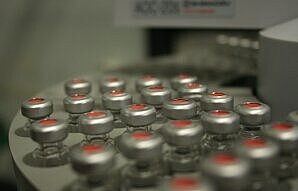The oxygenated derivatives of naturally occurring aliphatic alcohols and monoterpenes, particularly monoterpene allylic alcohols and diols, serve as valuable intermediates in pharmaceutical and fine chemical synthesis. However, selective hydroxylation at terminal or allylic positions via chemical methods is hard to achieve. A group of researchers from the Institute of Biology at Vietnam Academy of Science and TechnologyInstitute of Biochemistry, and the Institute of Biochemistry at Heinrich Heine University, the Center for Bioinformatics at Saarland University and the Hanoi University of Pharmacy characterized the cytochrome P450 CYP154A18, from the endophytic bacterium S. cavourensis. Furthermore, they conducted a screening of 42 structurally diverse compounds for potential substrates.
The publication recently appeared in Molecular Catalysis. Below you can read the abstract. The link to the whole publication can be found in the reference at the bottom.
"Monoterpenes and aliphatic alcohols are naturally occurring compounds found in plants, fungi, and microorganisms. Their oxygenated derivatives, particularly monoterpene allylic alcohols and diols, serve as valuable intermediates in the synthesis of pharmaceuticals, agrochemicals, and high-performance materials. However, achieving selective hydroxylation at terminal or allylic positions via chemical methods remains a major synthetic challenge. Cytochrome P450 monooxygenases provide an attractive biocatalytic alternative, enabling selective hydroxylation under mild conditions. Endophytic bacteria, especially Streptomyces species from medicinal plants, are promising sources of such enzymes with unique catalytic profiles. In this study, we report the characterization of CYP154A18, a cytochrome P450 from Streptomyces cavourensis YBQ59, an endophyte isolated from Cinnamomum cassia. The gene encoding CYP154A18 was heterologously expressed in Escherichia coli. A diverse panel of 42 structurally diverse compounds, including fatty acids, aliphatic alcohols, aromatic thioethers, and terpenes, was screened for potential substrates. CYP154A18 efficiently catalyzed the selective hydroxylation of acyclic monoterpene and aliphatic alcohols, such as geraniol to 8-hydroxygeraniol and octan-1-ol to 1,7-octanediol, with selectivities of 100 % and 90 %, respectively. Enzyme modeling and substrate docking studies supported the observed regioselectivity. These findings position CYP154A18 as a valuable addition to the biocatalytic toolbox for the sustainable synthesis of hydroxylated building blocks, with potential applications in pharmaceutical and fine chemical synthesis."
Ly TTB, Wassing A, Hutter MC, Dao ATM, Do PL, Mai TTT, Urlacher VB, Nguyen TT, 2025, CYP154A18 from the endophytic Streptomyces cavourensis YBQ59: A monooxygenase for selective hydroxylation of monoterpene and aliphatic alcohols, Molecular Catalysis, https://doi.org/10.1016/j.mcat.2025.115378


